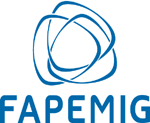|
|
-
All texts must be submitted through our online submission system: https://mc04.manuscriptcentral.com/vh-scielo
-
When submitting a manuscript, authors must inform their ORCID (Open Researcher and Contributor ID) identifier. Submissions in co-authorship must detail, at the moment of the submission, the contribution of each author to the piece of work. A two-year period must be observed between submissions by the same author, whether the previous manuscript has been accepted or rejected.
-
The articles must contain a maximum of 10000 words, the interviews 5000 words, and the book-reviews 1500 words, including notes, subtitles, images, charts, illustrations and bibliographical references. Each image, illustration, chart or similar corresponds to 300 words.
-
Each article must contain a title, an abstract and three keywords, both in the language in which it was written and in English. The abstract but have between 150 and 200 words, and express clearly in one paragraph: the topic, chronological and spatial landmarks, sources, main argument or the article and conclusions.
-
The book reviews must present works in which first edition in Portuguese has been published in the last three years, or in a foreign language in the last five years, in the field of History or its related sciences, provided that they demonstrate an important interdisciplinary dialogue. They must contain a proper title in Portuguese and in English, and present: editorial information, academic formation of the author and his/her relation to the reviewed book, main objectives and methodologies, main arguments and conclusions. If citations are made, they must reference the exact page. Extrapolating the limits of a simple summary, the review should provide a critical analysis of the work, its impacts on historiography and insertion in the debates on the topic addressed, in addition to the audience for which it is intended.
-
There must not be a supervision relation established between reviewer and author reviewed. The texts must be formatted in Times New Roman, size 12, spacing of 1,5, standard indent of 1.25 in the beginning of paragraphs and justified alignment. Do not use spacing before or after paragraphs. The pages in A4 size must present all the margins (right, left, superior and inferior) with 2,5cm.
-
Short textual citations (up to three lines) must be inserted in the text, between quotation marks and without italics (in cases where double quotation marks are used in the original text, simple quotation marks should be employed). Long textual citations (more than three lines) must constitute an independent paragraph, retreating from the left margin in 3.0cm with justified alignment, Times New Roman size 11 and spacing of 1,0, without quotation marks.
-
Translations must be presented in the language in which the article is written, with its original version in a footnote, preceded by the author of the translation (for example, “Author’s free translation”).
-
The bibliographical references must be cited in the author-date model (AUTHOR, YEAR, p. XX) in the body of the text and listed in alphabetic order at the end of the article or book review. References must follow the pattern established by ABNT, which are exemplified bellow:
Books:
MORUS, Thomas. Utopia ou a melhor forma de governo. Lisboa: Fundação Calouste Gulbenkian, 2009.
Quote in the body of the text: (MORUS, 2009, p. 99).
BÜTTGEN, Philippe; DUHAMELLE, Christophe (Dir.). Religion ou confession. Un bilan franco-allemand sur l’époque moderne (XVIe-XVIIIe siècles). Paris: Maison des sciences de l’homme, 2010.
Quote in the body of the text: (BÜTTGEN; DUHAMELLE, 2010, p. 4)
In case where there are more than three authors, use et al:
KOSELLECK, Reinhart et al. O conceito de História. São Paulo: Autêntica, 2013.
Quote in the body of the text: (KOSELLECK et al, 2013, p. 97)
Classical works:
PLATÃO. A REPÚBLICA. Rio de Janeiro: Nova Fronteira, 2011.
Quote in the body of the text: (PLATÃO, A REPÚBLICA, VII, p. 286)
Book chapters:
VERBERCKMOES, Johan. O cômico e a Contra-Reforma na Holanda Espanhola. In: BREMMER, Jan; ROODENBURG, Herman (Org.). Uma história cultural do humor. Rio de Janeiro: Record, 2000. p. 115-132.
Quote in the body of the text: (VERBERCKMOES, 2000, p. 125)
Journal articles:
MUCHEMBLED, Robert. Fils de Caïn, enfants de Médée. Homicide et infanticide devant le parlement de Paris (1575-1604). Annales. Histoire, Sciences Sociales, v. 62, n. 5, p. 1063-1094, sept./oct. 2007.
Quote in the body of the text: (MUCHEMBLED, 2007, p. 1065)
Entries:
DIDEROT. Autoridade política. In: DIDEROT, Denis; D’ALEMBERT, Jean Le Rond. Enciclopédia, ou Dicionário razoado das ciências, das artes e dos ofícios. São Paulo: Editora Unesp, 2015. p. 37-44.
Quote in the body of the text: (DIDEROT, 2015, p. 44)
Dictionaries:
DICTIONNAIRE de l’Académie Française. Paris: Les Libraires Associés, 1762. 4 ed.
Quote in the body of the text: (DICTIONNAIRE, 1762)
Annals of congress:
NAPOLITANO, Marcos. Engenheiros das almas ou vendedores de utopia? A inserção do artista intelectual engajado no Brasil dos anos 1970. In: SEMINÁRIO 1964/2004 – 40 ANOS DO GOLPE MILITAR, 2004, Rio de Janeiro. Anais... Rio de Janeiro: FAPERJ/7 Letras, 2004. p. 309-321.
Quote in the body of the text: (NAPOLITANO, 2004, p. 315)
CURTO, Diogo Ramada. Littératures de large circulation au Portugal (XVIe-XVIIIe siècles). In: COLLOQUE COLPORTAGE ET LECTURE POPULAIRE. IMPRIMÉS DE LARGE CIRCULATION EN EUROPE XVIe-XVIIe SIÈCLES, 1991, Wolfenbüttel. Actes… Paris: IMEC/ Maison des Sciences de l'Homme, 1996. p. 299-330.
Quote in the body of the text: (CURTO, 1996, p. 230)
Newspaper articles:
OTTA, Lu Aiko. Parcela do tesouro nos empréstimos do BNDS cresce 566% em oito anos. O Estado de São Paulo, São Paulo, 1 ago. 2010. Economia & Negócios, p. B1.
Quote in the body of the text: (OTTA, 2010, p. B1)
SCHWARTSMAN, Hélio. A vitória do Iluminismo. Folha de São Paulo, São Paulo, 18 mar. 2018. Disponível em: < https://www1.folha.uol.com.br/colunas/helioschwartsman/2018/03/a-vitoria-doiluminismo.shtml >. Accessed on: 29 abr. 2020.
Quote in the body of the text: (SCHWARTSMAN, 2018)
Unpublished dissertations and thesis:
CAIXETA, Bruna Pereira. Man in the Moone (Londres, 1638): utopia, ciência e política no pensamento de Francis Godwin. Dissertação (Mestrado em Teoria e História Literária) – Universidade Estadual de Campinas, Campinas, 2014.
Quote in the body of the text: (CAIXETA, 2014, p. 34)
Interviews:
BOURDIEU, Pierre. Le droit à la parole. Entrevistador: Pierre Viansson-Ponté. Le Monde, Paris, Les griles du temps, 11 oct. 1977, p. 1-2.
Quote in the body of the text: (BOURDIEU, 1977, p. 1)
MAXWELL, Kenneth. Entrevistadora: Ana Paula Sampaio Caldeira. Varia Historia, 5 jul. 2019. Disponível em: < https://www.youtube.com/watch?v=ErzUlKXJZVU >. Accessed on: 30 abr. 2020.
Quote in the body of the text: (MAXWELL, 2019)
Documents found online:
HARRIOT, Thomas. Monn Drawnings. In: The Galileo Project. Disponível em: < http://galileo.rice.edu/sci/harriot_moon.html >. Accessed on: 27 abr. 2020.
CERVANTES, Miguel de. Les Advantures du fameux Chevalier Dom Quixot de la Manche et de Sancho Pansa son escuyer. Paris: Boissevin, 1650. Disponível em: < https://gallica.bnf.fr/ark:/12148/btv1b52507162h >. Accessed on: 27 abr. 2020.
Archival documents:
References to archives must be placed in footnotes, not in the bibliography. They must follow the style: ARCHIVAL NAME, City. Title of document, year. Series, box, tome, vol., fº.
ARQUIVO NACIONAL DA TORRE DO TOMBO (ANTT), Lisboa. Corpo Cronológico, 1552. Parte 1, maço 86, doc. 45, carta de 11 abr. 1552.
ARQUIVO HISTÓRICO ULTRAMARINO (AHU), Lisboa. Carta do Rei D. João V, 22 ago. 1727. Anexos de AHU_ACL_CU_015, cx. 72, d. 606.
We emphasize that:
-
Self-references should be used sparingly;
-
In the references, the first name of authors must be indicated, but from the second name on we recommend the use of abbreviations. The pattern must be maintained throughout the references;
-
Page numbers must be quoted in full (p. 455-457, and not 455-57 or 455-7);
-
Permitted expressions include s.l. (sine loco, without indication of the place of the publication) and s.n. (sine nominee, without indication of the editor), but the date must be indicated, even if estimated – [16--], [162-];
-
Works in the process of publication must contain the indication in press in parentheses;
-
The year of publication indicated must be that of the edition used, not the original edition.
Cases not explained above must be presented in accordance with the ABNT norms.
-
Interviews and verbal information, as well as archival data must be cited in footnotes, and not included in the references. It is requested not to use Ibid and op.cit., and to provide the complete indication of the source whenever it is referenced.
The references of verbal information must be in the following format: Speech of (insert name of the author), (name of the event where said speech occurred), (place), (date of the speech). Example: Speech of professor Sérgio Odilon Nadalin, Theory of History I course, UFPR, 05 may 1999.
-
Footnotes, restricted to the elements pointed out above and to commentaries (moderately made), must be formatted in Times New Roman, size 10, simple spacing and justified alignment, with a line of space in between each footnote.
-
Images (charts, illustrations, graphics, drawings, etc.) must be submitted in separate archives from the text, in high resolution, JPEG format, RGB colour. Tables and pictures must come in Microsoft Word, and charts spreadsheets in Microsoft Excel, with indication of titles and sources. All images must be numbered and subtitled, with indication of source and access in the subtitle. The proponents must present permission for the use of each of the images, or indicate whether they have the status of Public Domain.
-
Research data management is one of the key practices of open science. Varia Historia asks the authors to pay attention to the citations and referencing of all data and any type of material used in the research.
-
Subtitles are recommended to indicate sections of the text. Subtitles must be inserted in capital letters, bold and without paragraph indentation.
-
Acknowledgements and indication of sources of funding must come at the end of the article, before bibliographic references.
|
|





